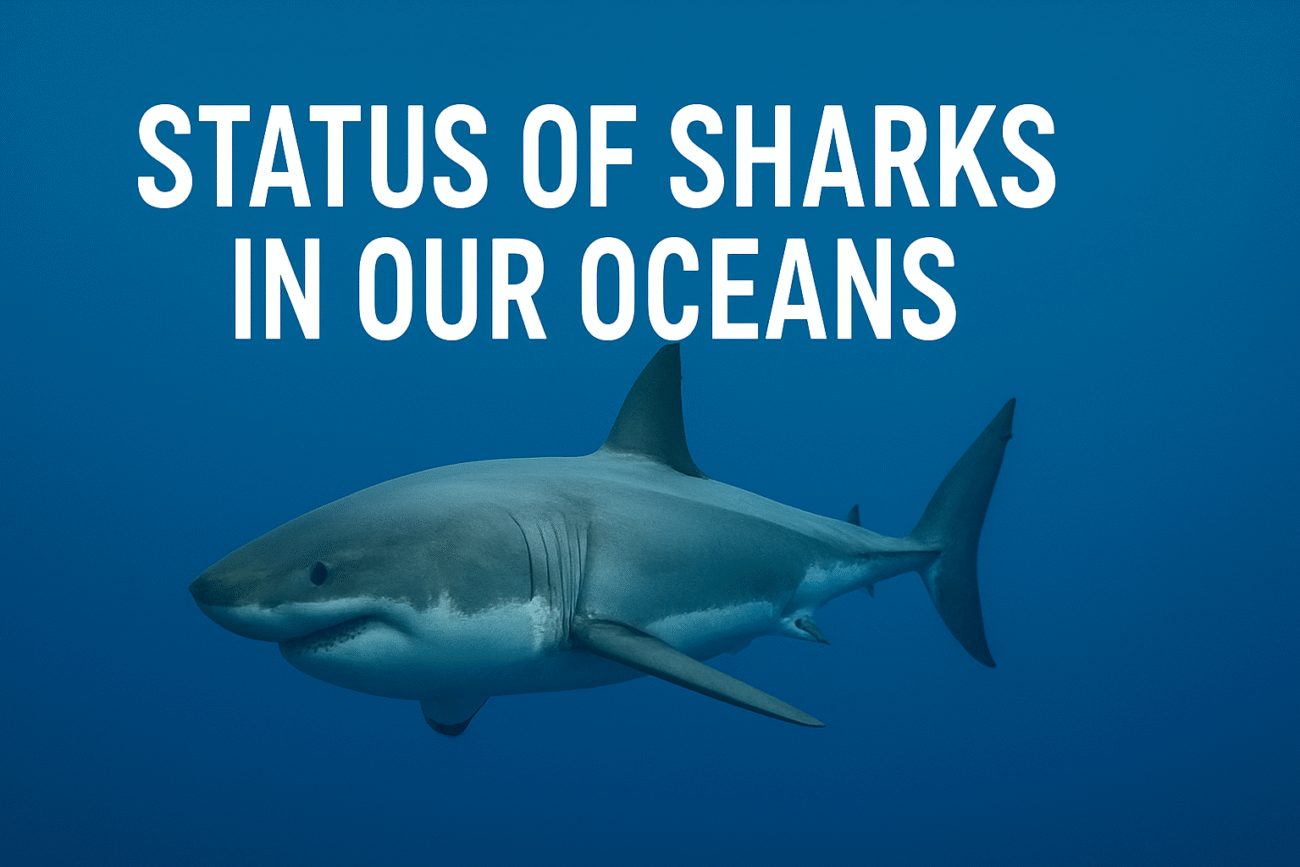Status of Sharks in Our Oceans
Sharks have existed for more than 400 million years.
They predate dinosaurs and help maintain ocean balance.
Today, they are among the most threatened marine animals.
Both legal and illegal fishing industries are harming their populations.
Emmy winning filmmaker and conservationist Shawn Heinrichs discussed this on Shark Week: The Podcast.
He revealed how industrial scale fishing is destroying the world’s shark population.
From finning to overfishing, sharks are targeted relentlessly.
Some are caught for their fins, others as bycatch in tuna nets.
The shark fin trade continues despite international bans.
Weak law enforcement allows trafficking networks to thrive.
Heinrichs described how exposing such crimes made him a target.
He once had a hit put out on him by criminal enterprises.
This shows how dangerous the fight for ocean conservation can be.
Even data from official agencies, like NOAA, is questioned.
Heinrichs doubts NOAA’s “sustainable fishing” statistics.
He believes they hide the real extent of population decline.
Recent studies show shark populations have dropped by 70% in 50 years.
Such decline threatens the health of entire marine ecosystems.
When sharks vanish, smaller fish species multiply uncontrollably.
This imbalance damages coral reefs and depletes food chains.
Marine biologists emphasize that saving sharks saves the ocean.
Healthy shark populations indicate a balanced marine environment.
Public awareness campaigns like Shark Week encourage understanding.
But there’s still so much people don’t know about these predators.
Shark Behavior and Reproduction: The Hidden World Beneath
Sharks’ biology and mating habits are fascinating and unique.
Their reproduction methods are unlike most other marine animals.
There are three main types of shark reproduction.
Some lay eggs, others give birth to live young, and some do both.
1. Oviparous Sharks: The Egg Layers
Oviparous sharks lay eggs in protective cases called “mermaid’s purses.”
These cases often wash ashore after hatching.
Inside each egg, a developing embryo grows until ready to swim.
Once hatched, the baby shark immediately hunts on its own.
This independent start shows the resilience of shark species.
They are born ready to survive from their first moment.
2. Viviparous Sharks: The Live Bearers
Viviparous sharks carry embryos inside the mother until birth.
The young are born alive, similar to mammals.
During this period, embryos feed on nutrients from the mother.
Some species even have an umbilical cord like connection.
This process allows stronger offspring and better survival chances.
Live birth ensures sharks enter the ocean ready to hunt.
3. Ovoviviparous Sharks: The Hybrid Method
Some sharks hatch internally before being born alive.
This hybrid method protects eggs from predators in early development.
In one study, scientists observed tawny nurse sharks’ embryos moving.
The unborn sharks swam beside their siblings inside the womb.
Such movement is rare among fish, showing sharks’ advanced behavior.
It demonstrates instinctive strength even before birth.
Mating Mysteries: How Sharks Reproduce
Mating among sharks is rarely witnessed in the wild.
Most observations come from aquariums or controlled studies.
Male sharks have two reproductive organs called claspers.
These act as channels to deliver sperm into the female.
During mating, one clasper locks into the female’s cloaca.
This ensures successful fertilization despite strong ocean currents.
Female sharks sometimes store fertilized eggs for months.
They wait for safe conditions before giving birth.
This unique control over reproduction boosts survival rates.
It shows sharks’ evolutionary brilliance and adaptability.
However, human activities now endanger this natural process.
Pregnant sharks often die in fishing nets before giving birth.
Climate change worsens this crisis by warming breeding grounds.
Temperature shifts affect gestation and prey availability.
Researchers warn that continued habitat loss will reduce shark births.
Some species may face extinction within the next few decades.
Conservation and Hope for the Future
Conservation groups are racing to protect sharks worldwide.
Marine sanctuaries now serve as safe breeding and feeding zones.
These protected areas allow shark populations to recover slowly.
Global cooperation is key to making such efforts succeed.
Public education campaigns are equally important.
Changing perceptions from fear to respect helps build empathy.
Shawn Heinrichs believes storytelling is a powerful conservation tool.
His films connect audiences emotionally to marine life.
Through media like Shark Week, people learn sharks are vital, not villains.
Each episode blends science, adventure, and awareness.
The more we know about sharks, the more we value them.
Protecting sharks is essential for a healthy planet.
As Heinrichs says, “Science doesn’t lie, but mystery remains.”
There’s still so much to learn about these ancient creatures.
Their survival represents the ocean’s survival.
Without sharks, the seas lose their balance and humanity loses too.
Every small act of conservation makes a big difference.
When sharks thrive, life in the ocean thrives as well.
